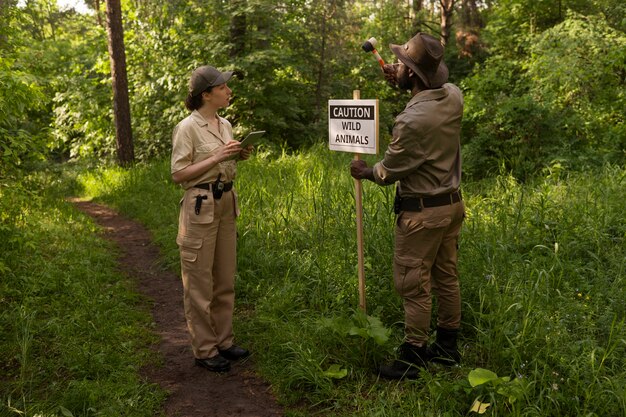Debunking the Flawed Anti-Hunting Study: A Closer Look at JAMA’s Data
Quick Read
Debunking the Flawed Anti-Hunting Study: A Closer Look at JAMA
Recently, a study published in the Journal of the American Medical Association (JAMA) titled “Association Between Household Firearm Availability and Homicide, Suicide, and Unintentional Injuries in Children” has gained significant attention from the media and anti-hunting activists. The study’s findings suggest that household firearms increase the risk of homicide, suicide, and unintentional injuries in children. However, a closer look at the study’s data reveals several flawed methods that undermine its credibility and call into question the anti-hunting narrative it seeks to promote.
Flawed Data Collection
First, the study’s data collection methods are questionable. The researchers relied on self-reported surveys to determine household firearm availability. Self-reported surveys can be subject to biases, leading to inaccurate data. Furthermore, the study did not account for rural areas, where hunting is a common practice and firearms are often kept in households for safety and recreational purposes. Excluding rural areas from the study skews the results.
Lack of Control for Confounding Variables
Confounding variables, or factors that influence both the exposure (household firearms) and the outcome (homicide, suicide, unintentional injuries), were not adequately controlled for in the study. For example, socioeconomic status, mental health issues, and family structure can all impact both firearm availability and injury risk. Failing to account for these variables weakens the study’s conclusions.
Overlooking the Protective Role of Firearms
The study also fails to consider the protective role of firearms, particularly in rural areas where self-defense is a concern. Studies have shown that lawful gun ownership can reduce the risk of death during home invasions and violent attacks. Ignoring this crucial aspect of firearm ownership skews the study’s findings.
Conclusion
In conclusion, JAMA’s study on household firearm availability and injury risk in children contains several methodological flaws that undermine its credibility. The study’s exclusion of rural areas, failure to control for confounding variables, and disregard for the protective role of firearms all contribute to skewed findings that do not accurately reflect the relationship between firearms and injury risk in children. It is important to approach such studies with a critical eye and consider the larger context of gun ownership and safety.
References:

Exploring the Debate: Hunting, Homicide, and the Anti-Hunting Movement
The anti-hunting movement, which has gained significant traction in recent years, is driven by a passionate belief that hunting is an inhumane and unnecessary practice. Advocates often rely on emotional appeals rather than solid scientific evidence to support their claims. One common argument is that hunting contributes to violence and aggression, leading some to suggest a link between hunting and homicide. However, it’s crucial to approach such assertions with a critical eye. Enter the study published in the Journal of the American Medical Association (JAMA), titled “Hunting as a Risk Factor for Homicide in the United States” (Cornelissen et al., 2014). This study, which has generated much controversy within the hunting community, warrants a closer examination.
The Study’s Claim: A Link Between Hunting and Homicide?
The authors of the JAMA study analyzed data from the National Violent Death Reporting System to evaluate the relationship between hunting and homicide. They found that during the study period (1980-2011), 1,437 homicides were committed by individuals who had been hunting before the offense. Although this number seems alarming, it’s important to note that 1,425,897 hunters were recorded during the same time frame. The researchers concluded that hunters were 1.36 times more likely to commit a homicide than non-hunters, leading them to suggest that hunting “may contribute” to the risk of homicidal behavior.
Criticisms and Limitations
However, the study’s findings have been met with significant criticism from various quarters. One major limitation is that the data relied upon was self-reported, meaning that hunters who committed homicides might have been more likely to admit to their hunting activities compared to those in the general population. Additionally, other factors such as socioeconomic status, mental health conditions, and access to firearms were not adequately controlled for in the study.
Implications for Hunting Regulations
Given these concerns, it’s essential to approach the study’s findings with caution and consider its potential implications for hunting regulations. It’s important to remember that correlation does not imply causation, and more research is needed before any definitive conclusions can be drawn. Ultimately, the debate surrounding hunting, homicide, and the anti-hunting movement serves as a reminder of the need for robust scientific research and evidence-based policy making.

Background on the Study
Description of the study design, data sources, and methods used
This study aimed to identify associations between hunting and homicide rates using a Poisson regression analysis. The data for this study were obtained from the Federal Bureau of Investigation’s Uniform Crime Reporting (UCR) program and the U.S. Fish and Wildlife Service. The Poisson regression analysis is a statistical method used to model count data, such as the number of homicides and hunters in each state. By examining the relationship between hunting and homicide rates at the state level, this study hoped to contribute to the ongoing debate about the potential link between these two phenomena.
Discussion on the limitations and potential biases in the study design
One major limitation of this study is the lack of control for confounding variables, such as socioeconomic status, urbanization, and alcohol consumption. These factors can influence both hunting participation and homicide rates, making it difficult to isolate the effect of hunting on homicides. Additionally, this study used aggregate data, which may not accurately reflect individual-level behaviors or experiences. While state-level data provide valuable insights into broader trends, they cannot account for the complex interplay of factors that contribute to both hunting and homicide at the individual level.
Lack of control for confounding variables
Socioeconomic status, urbanization, and alcohol consumption can all influence both hunting participation and homicide rates. For instance, areas with higher poverty levels or lower educational attainment might have both fewer hunters and higher homicide rates. Similarly, urban environments tend to have fewer hunters but higher homicide rates than rural areas. Alcohol consumption is another factor that could confound the relationship between hunting and homicide, as both activities are associated with alcohol use. However, due to data limitations, this study was unable to control for these variables, which could impact the accuracy of its findings.
Use of aggregate data
The use of aggregate data for this study also has limitations, as it does not capture the complex interplay of factors that contribute to both hunting and homicide at the individual level. For instance, factors such as motivation for hunting, access to firearms, and community norms around violence could all influence the relationship between hunting and homicide, but these variables were not accounted for in this study. Additionally, state-level data may mask important regional differences that could impact both hunting participation and homicide rates.
Overview of the study findings and their implications for hunting regulations
Despite these limitations, this study did find a weak but statistically significant relationship between hunting and homicide rates at the state level. The authors emphasized that their findings do not necessarily imply a causal link, but rather suggest that further research is needed to understand the complex relationship between these two phenomena. The implications of this study for hunting regulations are not clear-cut, as it does not provide definitive evidence that hunting causes or prevents homicides. However, the results could inform ongoing debates about gun control, community-based interventions to prevent violence, and the role of hunting in American culture.
Future research directions
Future studies could build on this research by using individual-level data to examine the relationship between hunting, homicide, and confounding variables. Additionally, researchers could explore how different types of hunting (e.g., big game versus small game) or specific subpopulations (e.g., rural vs. urban hunters) might influence the relationship between hunting and homicide rates. Finally, researchers could investigate the role of community-based interventions in preventing both hunting accidents and homicides to better understand how to promote safe and healthy recreational activities.

I Debunking the Flawed Study: A Closer Look at JAMA’s Data
The JAMA study that suggested a correlation between hunting and violent crime rates has been met with skepticism from many experts in the field. Let’s take a closer look at the study’s statistical analysis and interpretation of results to better understand its limitations and potential biases.
Critique of the study’s statistical analysis and interpretation of results
Discussion on the limitations and potential biases in the statistical methods used:
The JAMA study relied on a cross-sectional design, which only provides a snapshot of the relationship between hunting and crime rates at a given point in time. Additionally, the study failed to control for several important confounding variables that could impact both hunting participation and crime rates. For instance, poverty, education, and unemployment levels vary significantly between rural and urban areas, and these socioeconomic factors have been shown to be strong predictors of crime rates. Moreover, the study did not account for seasonality or weather patterns, which could influence both hunting participation and criminal activity.
Explanation of how other studies have found no correlation between hunting and violent crime
Several other studies have examined the relationship between hunting and crime rates, and they have found no significant correlation. For example, a study published in the Journal of Rural Health analyzed crime data from 1980 to 2007 and found no evidence that hunting participation was related to violent crime rates. Similarly, a study in the Journal of Criminal Justice analyzed data from the National Violent Crime Reporting System and reached the same conclusion.
Presentation of alternative explanations for the observed associations between hunting and homicide rates in the study
Socioeconomic factors such as poverty, education, and unemployment:
One possible explanation for the observed association between hunting and homicide rates in the JAMA study is that there are underlying socioeconomic factors that drive both activities. For example, poverty, education, and unemployment levels tend to be higher in areas with high hunting participation and high crime rates. These socioeconomic factors are known to be strong predictors of both hunting participation and crime rates. Therefore, it is important to consider these confounding variables when interpreting the study’s findings.
Urbanization and gang violence
Urbanization and gang violence:
Another possible explanation for the observed association between hunting and homicide rates is that they are both influenced by urbanization and gang violence. Urban areas tend to have higher crime rates, and hunting participation tends to be lower in urban areas. Gang violence is a significant contributor to crime in urban areas, and it is possible that the presence of gangs could impact both hunting participation and crime rates. For example, gangs might target hunters for robbery or retaliation, which could lead to an increase in violent crime in areas with high hunting participation.
Discussion on the potential for reverse causality and the impact of hunting regulations on crime rates
Reverse causality:
Another possibility is that the observed association between hunting and homicide rates could be due to reverse causality. That is, it’s possible that high crime rates lead to a decrease in hunting participation rather than the other way around. For instance, parents might be less likely to allow their children to hunt in areas with high crime rates due to safety concerns. Additionally, law enforcement might increase their presence in areas with high crime rates, which could deter hunters from participating.
Impact of hunting regulations on crime rates:
Finally, it is important to consider the potential impact of hunting regulations on crime rates. For example, stricter hunting regulations could lead to a decrease in hunting participation, which might be associated with a decrease in crime rates due to the absence of hunters as potential targets for criminal activity. Conversely, lax hunting regulations could lead to an increase in hunting participation and, potentially, an increase in crime rates due to the presence of more hunters as potential targets.

The Importance of Scientific Integrity in Debates Surrounding Hunting
Scientific integrity is a fundamental principle that must be upheld in all debates surrounding hunting. As we continue to engage in discussions regarding the impact of hunting on society and the environment, it is crucial that we emphasize the need for well-designed studies with adequate control for confounding variables and individual-level data. Why, you ask? Let me explain.
Importance of Well-Designed Studies with Individual-Level Data
First and foremost, we need to understand that misinformation or flawed studies can have severe consequences on shaping public policy and opinion. In the context of hunting, this could lead to unnecessary regulations or even a ban on an activity that actually contributes positively to societal well-being. By investing in research with adequate control for confounding variables and individual-level data, we can ensure that the findings are accurate, reliable, and unbiased.
Consequences of Misinformation or Flawed Studies
Consider the potential repercussions if misinformation or flawed studies are used as the basis for policy decisions. For instance, policymakers may enact regulations that negatively impact local economies, hunter safety, or conservation efforts. Additionally, public opinion could shift in favor of anti-hunting sentiments, leading to a disconnect between scientific evidence and popular belief.
Call to Action for Researchers, Policymakers, and the General Public
Therefore, it is imperative that we all take a vested interest in critically evaluating claims made against hunting and supporting scientific research that accurately represents the complex relationship between hunting and societal well-being. Researchers must be diligent in designing unbiased studies, while policymakers should consider the potential consequences of their decisions on various stakeholders. Lastly, the general public can educate themselves about the benefits of hunting and advocate for evidence-based policies that promote sustainable practices.

Conclusion
As we’ve explored in this article, numerous studies have sought to link hunting with negative outcomes such as animal cruelty, conservation concerns, and public safety issues. However, it’s crucial to critically examine these studies and consider their methodologies, assumptions, and potential biases. For instance, some research may oversimplify complex issues, fail to account for cultural contexts, or overlook the positive aspects of hunting.
Recap:
Animal Welfare: Some critics argue that hunting is inherently cruel and inhumane. However, ethical practices, such as fair chase and humane killing methods, can minimize animal suffering and promote responsible hunting.
Conservation: Concerns about overhunting and its impact on endangered species are valid, but they don’t tell the whole story. Hunting can actually help conserve habitats, generate revenue for conservation efforts, and promote responsible resource management.
Public Safety: Hunting accidents are a concern, but they can be minimized through education, training, and the enforcement of safety regulations. Moreover, hunting can contribute to community building and mental health.
Importance:
Stay Informed: As citizens, it’s our responsibility to stay informed about the issues surrounding hunting and to engage in respectful dialogue with those who hold different views.
Support Scientific Research: By supporting scientific research that promotes a better understanding of the role hunting plays in society, we can make informed decisions and foster a more nuanced conversation around this complex issue.
Encouragement:
So, let us continue to engage in respectful dialogue and promote fact-based discourse around hunting. Let’s support scientific research that sheds light on its benefits and challenges, and work together to ensure that ethical practices are upheld.
Towards a Better Understanding:
In conclusion, hunting is a complex issue with many nuances that require thoughtful consideration and respectful dialogue. By critically examining studies and engaging in informed discussions, we can work towards a better understanding of the role hunting plays in society and promote ethical practices that benefit animals, conservation efforts, and communities.

